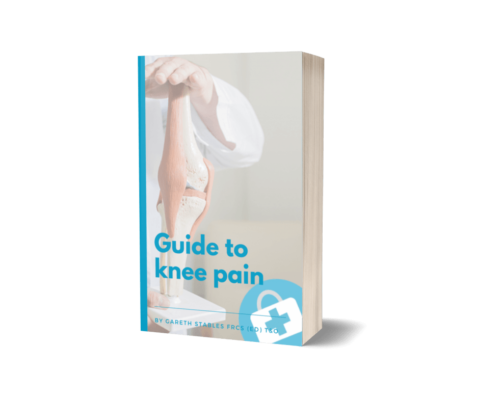Why does my knee keep “giving way”?
As a Consultant Orthopaedic and Knee Surgeon I treat many patients with difficult knee problems.
A common problem that affects many of my patients is the feeling of their knee “giving way”. This often happens unexpectedly and can be painful, although sometimes it is not. It causes instability and can affect everyday life, they lose confidence in their knee and it can get in the way of them doing the things they enjoy such as running, taking the dog for a walk or having a kick about with their kids in the garden.
Many things can cause this troublesome problem the following are some examples from my patients.
Scenario 1: I Don’t Remember Injuring My Knee
A 49-year-old solicitor came to my Specialist Knee Clinic and explained that on many occasions she had felt her knee buckle under her when she was trying to run.
This happened when running on un-even ground or when changing direction.
She explained that she didn’t remember injuring her knee but had woken up the following day with pain and stiffness in her knee, but this had settled. On closer questioning she had noticed some pain a few months ago when she had been on a walk in the mountains in Snowdonia…but hadn’t fallen or twisted her knee , so had forgotten about this episode.

The Diagnosis…
The solicitor had a Cartilage or Meniscal Tear. I was able to diagnose this from her symptoms and a simple examination in my Knee Clinic, and we confirmed the diagnosis with an MRI scan.
Your Meniscus, also known as your cartilage, is a rubbery, crescent shaped structure that acts as a “shock-absorber” and also helps your knee “fit” together or makes the joint more congruent. You have one on the inner and outer side of your knee.
Unfortunately, as we get older, and for the meniscus older means after our mid-thirties, your meniscal tissue becomes less robust and easier to damage or tear.
Most of my patients don’t recall a specific injury, they probably damaged their cartilage by doing something as simple as twisting, crouching or stepping down off something. The solicitor had probably damaged her cartilage on that walking trip.
The Treatment…
Even as a Knee Surgeon, I believe that surgery should be your last resort and for this type of cartilage tear the evidence would back me up. I provide my patients with access to specific physiotherapy treatments and sometimes injections to help with healing and inflammation if needed. Many patients will then be able to get back doing the things they love without the fear of their knee giving way.
If your symptoms don’t respond to these treatments and you still have episodes of giving way then Keyhole or Knee Arthroscopy surgery can help. This safe, day-case procedure allows me to remove the torn piece , a bit like trimming a broken nail, and you are usually back doing the things you enjoy after a couple of weeks. This is a very successful procedure.
About the solicitor…she made a great recovery with a combination of a Sodium Hyaluronate (Ostenil Plus) injection and physiotherapy…I keep in touch and monitor her outcome…as I do with all my private patients…and she is still doing well over a year since coming to see me.

Scenario 2 : I twisted my knee and felt a pop
A 25-year-old footballer came to my Specialist Knee Clinic. He had twisted his knee during a game and had felt a “popping” sensation in his knee when this happened. His knee was immediately painful and swelled up almost straight away.
He couldn’t finish the game and went to his local Emergency Department for advice. They X-rayed his knee and told him there was nothing broken and he probably had a “soft tissue injury” he was advised to rest, use ice packs and given some crutches.
The pain settled but…fast forward a few months… his knee was still not right. It kept giving way when he tried to train and he hadn’t been able to get back to playing football.
The Diagnosis…
It was obvious from his story and examination that he had damaged his ligaments and the MRI scan confirmed…
The footballer had a cruciate ligament tear.
The Anterior Cruciate Ligament (ACL) is a key stabiliser in your knee joint. It helps stop your knee giving way especially when it twists during pivoting and sporting movements.
Injuries to the anterior cruciate ligament can occur during many activities but are common in sports such as football, netball and rugby.
The footballer’s knee gave way from time to time , this is typical of this injury.
The Treatment…
Believe it or not...many patients with a cruciate ligament tear can be treated without surgery. I provide all my private patients access to the best rehabilitation treatments and many are able to return to their normal activities without the need for surgery.
For those that do need surgery then I know their outcomes will be better if they have had some rehabilitation beforehand so I always ensure that we get their knee in the best possible condition with the right physiotherapy first.
Over the last 20 years there have been many tremendous developments in the treatment of these injuries with keyhole surgery.
An ACL reconstruction is a very successful procedure if done well and a number of my patients, including high level athletes, return to their pre-injury sporting level after a carefully timed and carefully performed reconstruction and good post-op rehabilitation.


